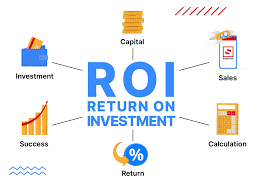The area of public relations , sometimes known simply as PR, takes care of the image of a brand, whether it is linked to a company or a professional.
It doesn’t matter what size of business we are talking about: your reputation is ultimately a guarantee of survival and success.
This explains right away why it is important to know and understand what public relations is, to structure this area and put into practice the actions expected from it.
A good public relations job can help to manage reputation , communicating and building good relationships with all stakeholders in the company, the so-called stakeholders .
And it was thinking about the success of a brand that we prepared this article.
In it, we will talk about the concept of public relations, training and the career of professionals qualified to work in the area.
Courses, salaries, job opportunities and PR roles are topics that will appear throughout the text.
If the subject matters, don’t miss a single line from now on.
Good reading!
What is public relations?
Essentially, public relations (PR) is the practice of maintaining a healthy relationship between the company and all its points of contact: public, employees, investors and other partners.
In other words, its purpose is to build and manage a brand’s reputation – how companies or individuals are perceived, how they perceive themselves, and how any disconnect between the two can be resolved.
And all the magic happens thanks to the work of professionals trained in this area.
Its techniques not only help in the flow of information from the company to the public, but also from the public to the company (reviews, criticisms, etc.), stimulating two- way communication and promoting a positive image of the brand.
We can still do a deeper reflection on the concept of public relations and what it represents nowadays, thinking beyond the purely reputation issue.
With the advances of social media and the internet, with consumers increasingly aware and informed, those who create and maintain a positive image build a competitive advantage .
In this way, the public relations area, today, is linked to the art of communicating, creating debates, modeling personalities, relationships with influencers, producing quality content and leading the conversation with the audience in the best possible way.
What does a public relations professional do?
What does a public relations professional do?
Now, we need to recognize the proper value of the public relations professional.
He is a key part of the success of any company.
His schedule concentrates several communication demands and he manages them all.
In an attempt to strengthen the relationship and avoid noise in communication with the public, the professional can perform different functions, such as those listed from now on.
Tell the brand story
PR professionals are tasked with developing, guiding, and managing consumer perceptions of the company .
In this way, they are the voice of your brand, responsible for creating a compelling story, which they share with the audience through various media channels.
In a task force with marketing and advertising people, they add an extra layer of substance to communications campaigns.
They also amplify the message through articles, press releases, statements, events and comments in various media.
When you read a news report, listen to a radio spot, read about an event or a new product in a magazine, chances are a PR professional has participated in that interaction.
manage crises
Generally speaking, PR professionals seek to obtain the most accurate and positive news for the consumer about a brand.
After all, this is the image they work to build.
But not everything is always a bed of roses.
And social networks are there to prove how brands suffer from small (or not so small) errors in interacting with the public.
At that moment, there is a flood of criticism , negative feedback , internal or external, that can affect your reputation.
How this will be managed by the media and, in turn, interpreted by the consumer is also a concern for PR professionals.
In these situations, as firefighters , they act to put out the fire alongside the other characters of a communication office.
The goal is always to avoid bad consequences for the brand.
Conduct opinion polls
PR professionals work hard to create unique stories about their organizations.
It is an effort that always seeks to create favorable perceptions in the consumer’s mind , stimulate debate, manage crisis when necessary and promote positive events and memories.
For this, knowing your audience is essential.
But the market is volatile and dynamic, which requires the use of different tools and techniques for each approach.
How, then, to meet what the consumer wants?
Opinion polls, both internal and external, enter the field as one of the demands on the public relations agenda.
Thus, professionals act to find out what people are thinking about the brand , a particular service or service offered by it.
These are data that support the decision-making of managers, who are enabled through research to discover what is or is not working well among current practices.
Deliver the message to the audience
After identifying the main strategic directions for the brand, PR professionals go in search of new answers: what message to deliver to the public and through what formats.
There are different ways of reaching the audience to dialogue with them.
It can be through press releases , fact sheets, positioning statements, official reports, PowerPoint presentations, opinion articles, blog posts and so on.
Each of these methods provides yet another opportunity to shape and guide the message given to the audience.
Therefore, it is important to be careful with the choice of words and the tone of voice used in this process so as not to cause adverse reactions.
Although, many times, the PR is not the figure that will directly produce the content, it needs to be part of the strategy.
organize events
Events are a great way to get closer to the public .
They can be fairs, seminars, lectures, workshops or even the presence in initiatives organized by the government.
These are opportunities to reinforce the brand’s image, highlight its authority and relevance in the market, as well as establish contacts that can yield future benefits.
The PR professional needs to participate in this organization process, ensuring that the company’s communication needs are met.
Manage contracts and relationships
For a business to thrive, it needs good relationships, right?
And PR professionals contribute to this with actions aimed at different audiences of interest .
Yes, the correct is public, in the same plural. Because an organization has interconnected publics, which ensure the success of the company as a whole.
Among them, the internal public (made up of employees), the external public (which includes consumers, partners and suppliers) and also the media channels.
They all need to get the company’s attention .
Obviously, the task is not just for the PR, but part of their day to day.
Provides communication advice
The communication consultancy is the sector responsible for connecting the company with the public.
It is the person who prepares a public relations plan, designed to serve the entire communication area of the company.
Here, the PR professional is in charge of doing press relations, managing social networks and also managing the brand image.
What do I need to become a Public Relations?
What do I need to become a Public Relations?
Do you know what Public Relations, Journalism and Advertising and Propaganda have in common?
All are qualifications from the Social Communication course .
This is the basic training of the PR professional.
There, you already have an idea of its main feature: it needs to be communicative .
You know that guy who’s good people on the ride and gets along with the crowd? In the job market, he is the PR.
And it’s no wonder, after all, the professional needs to have a lot of waist game to deal with customers and even employees, sometimes dissatisfied.
A good command of the language and good articulation of words , especially in delicate and crisis situations, is also essential.
Other prerequisites include having an interest in news, writing, content creation, film, photography, and working with people.
How long is the public relations course?
How long is the public relations course?
The duration of the Public Relations course is directly linked to the chosen modality: bachelor’s degree or technology .
There are more than 80 universities (public and private) that have the course recognized by the MEC.
Interested parties can also take a face-to-face course or opt for distance learning.
Bachelor’s degree courses in PR have an average duration of 4 years and have a broader curriculum, involving practical and theoretical disciplines to train professionals to work in different areas.
Technology courses are shorter, on average 2 years, and are more focused on meeting market demands.
Consequently, the grid ends up being more restricted in technical and practical disciplines , such as organizational communication and web content, for example.
What’s in the public relations course?
As you’ve just seen, bachelor’s and technology courses have slight differences in terms of curriculum .
However, as proposed by the Ministry of Education in 2010, the most common subjects are:
- Theories and History of Communication
- Public Relations Theories and Histories
- Media Studies
- Communication Ethics
- Notions of Journalism
- Communication Policies
- Theories of Public Opinion
- Public Communication
- Organizational communication
- Political Communication
- Internet communication
- Public Opinion Polls
- Communication Planning
- Strategic Communication with Specific Audiences
- Organization of Events and Ceremonies
- Image, Identity and Institutional Reputation
- Communication Advisory
- Marketing .
What is a PR company?
Until recently, a Public Relations company or agency was automatically associated with the press office , being focused on the institutional communication of the brand in relation to the media.
However, the internet and the entire apparatus of platforms, tools and online resources available have revolutionized not only the way we communicate, but also the scope of work of these companies.
Today, a PR agency needs to gather all the expertise that involves the universe of communication .
And it must do so in an integrated manner, in order to offer complete solutions to its customers, with strategic intelligence and cost-effectiveness.
They are companies responsible for defining strategies and executing communication projects for both internal and external audiences.
Thus, they contribute to the positive reputation of brands, carrying out editorial coverage and gaining exposure for the business.
What is company PR and its main applications
Companies interested in public relations services can either hire outsourced agencies or set up their own department .
The choice depends on the particular strategy of each business.
However, the attributions do not change and it is up to the PR to lead the business along the path of success .
For example, a good agency or PR professional is able to analyze the organization, get customer feedback and translate it into positive stories.
We can also highlight the following responsibilities:
- Develop a short, medium and long term communication plan
- Define the best brand communication strategies
- Map and engage the company’s strategic audiences
- Monitor the behavior of these audiences
- Disseminate the company’s key messages and generate instant media
- Work on the brand’s positive image
- Manage conflicts and crises
- Produce special events designed for public outreach and media relations
- Develop and analyze opinion polls that help create or optimize communication strategies.
Is there a difference between Public Relations and Advertising and Propaganda?
Is there a difference between Public Relations and Advertising and Propaganda?
Because they are under the same umbrella (the media), advertising and public relations have similarities, but they do not perform the same functions .
The two strategies have complementary roles to lead a brand to achieve its communication goals.
On the one hand, we have advertising, focusing on encouraging potential customers to choose the product offered by the company over the competition.
On the other hand, we have PR activities, building and maintaining a good relationship with the company’s stakeholders and improving its reputation.
For advertising, the company pays for the ad space . And, precisely because you are paying for this space, you have creative control over what goes into that ad and know exactly when it will run.
With public relations, the work is different.
Here, professionals seek free publicity and exposure for the company, making use of “weapons” such as participating in press conferences, organizing events and publicizing press releases.
There is just no guarantee, for example, that the media will be interested in these actions.
Another point is that in the case of advertising, consumers know right away when they are reading an ad that is trying to sell something.
In public relations, the impact is more subtle , but no less valuable.
Each and every brand is committed to understanding what the two areas can offer it in the permanent dispute for consumer preference.
In fact, it is not necessary to choose between one strategy and another, but to unite them in a complete effort, as in integrated communication campaigns .
Conclusion
In this article, we present a complete guide to the area of public relations , which uses techniques and tools to build or improve the reputation of brands and bring them closer to their stakeholders.
We have seen that this is often done through interactions through the media, obtaining free publicity and exposure for the company.
The area’s potential explains why a career in PR tends to be promising .
The challenges are many, but so are the opportunities.
The companies that position themselves in the market in a more positive way win.
And also the talents, who can be recognized for their corporate communication skills .
Do you have any questions on the subject or would you like to give your opinion on the subject? Leave a comment below.
Enjoy and also share this content on your social networks.




